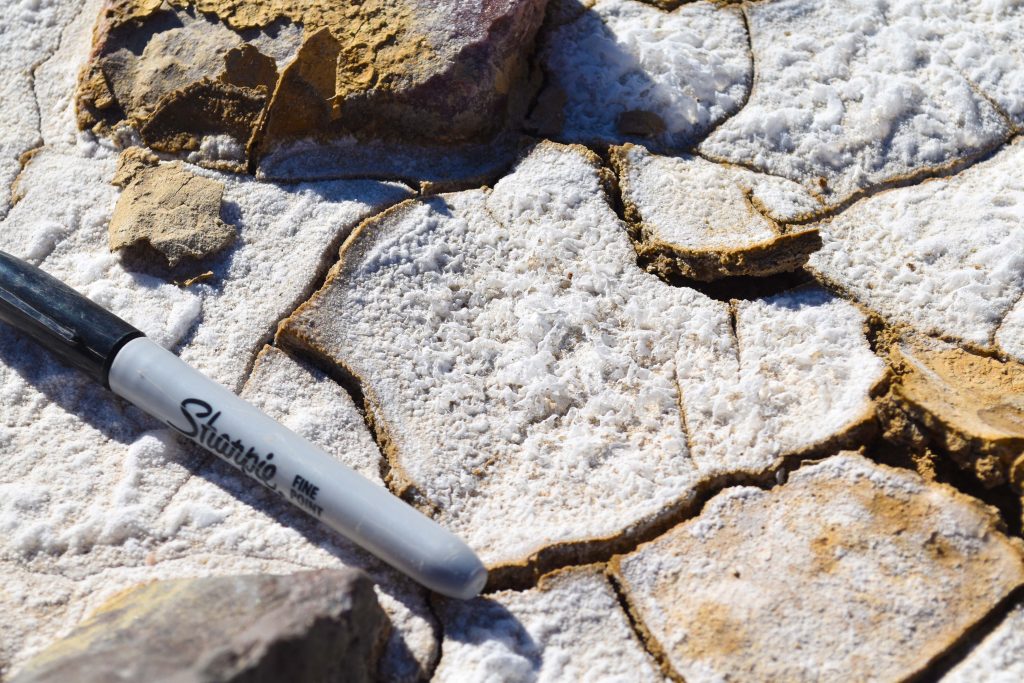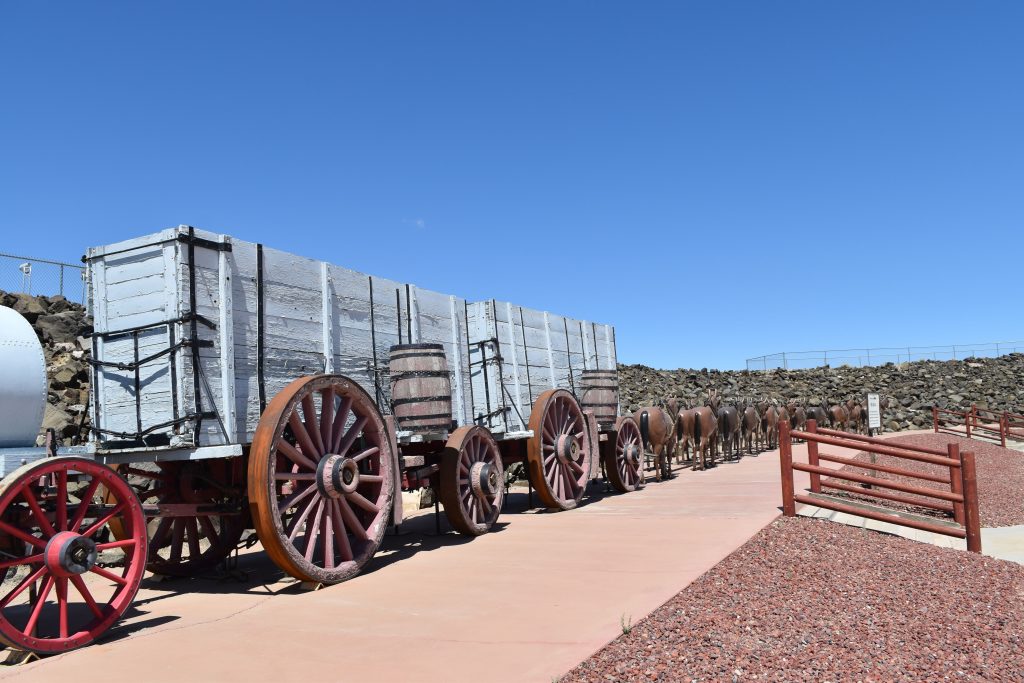Death Valley, California, United States
April 12, 2019
We want answers about veins we observe in rocks of Mars. We want to know how they formed, what was the water like that formed the veins, why do the veins have boron in them, can the boron tell us things about the past water conditions on Mars? So, we packed our incessant questions along with our field gear and took them to Death Valley. We chose Death Valley because it is one of the few candidates that hosts both borate and calcium sulfate deposits in an arid environment with dry-wet cycles like that of Mars. Our field recon shed light on the borate deposits and the interesting human history surrounding the prospecting of these deposits. Our exploration started in the Gower Gulch area of Death Valley National Park. Not long into our first field day, we came across some fantastic looking veins in both alluvial fans and bedrock of the Gulch. We collected vein and surrounding rock samples for detailed analysis. We are curious about the chemical composition of the veins and are looking forward to what we find in the samples of the following field days!
Welcome to Death Valley

Borates: The White Gold of Southern California
Death Valley, California, United States
April 14, 2019
The story of boron is interesting not only on Mars but also on Earth. In the late 1800s, prospectors came to southern California in Death Valley in search of gold only to find soft, white and often cotton ball-shaped minerals covering acres and acres of the land. They were quick to realize that these white minerals, although not as precious as gold, would become a highly valued commodity in industry and households. This realization gave the white colored borate minerals the name White Gold. In 1882, William T. Coleman built Harmony Borax Works and hired Chinese laborers to scrape cottonball borates from the lake bed in the valley. He also built the Amargosa Borax Works near Shoshone, producing about 2 million pounds of borax per year from his Death Valley and Amargosa borate refineries. 20 Mule Teams were used for hauling millions of pounds of borates from remote desert areas to the railroad at Mojave.
The borates precipitated in the hot summers after the rainwater dissolved and washed down ancient borate deposits from higher elevations to the lake beds in the valley. This process of borate deposition is, in some ways, similar to what we think happened on Mars. But we don’t know for sure yet. So, what better place to look for answers than here?
We made a stop at the Harmony Borax Works on one of our sample collection days. Although we didn’t collect any samples from here (as this site is a preserved area), we did walk around on the interpretive trail and took in the history of the place. It made me think about the fleeting relationship humans have with ancient geologic deposits. Mineral deposits have always been a vital natural resource for us, and they have attracted settlers who depend on mining and prospecting as a livelihood. It was interesting to see the remnants left behind by a community that saw maybe a decade of prosperity in this dry and salty area, then moved away to better prospects, leaving a ghost town in the middle of the desert. But more on that in following blog posts.
The borate deposits surrounding this area are relatively young and are found as flakey crusts on top of dehydrated layers of mud. The ultimate goal of this field season was to collect borates associated with calcium sulfate minerals, but I collected some of these crusty layers too, in case they show us something interesting. I packed them carefully in plastic boxes because I didn’t want the samples to crumble. I’m expecting to see a whole bunch of salt crystals mixed in with whichever borate mineral has precipitated on the mud layers. Samples like these can indicate the properties of the aqueous medium that carried them there then left behind the evaporite minerals once it got hot and dry. This might give us some interesting insights into what ancient aqueous fluids on Mars were like. More updates about the crusty layers to come after some lab work!



